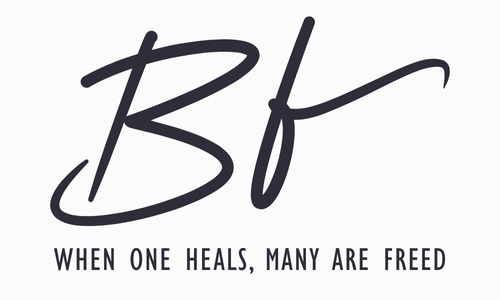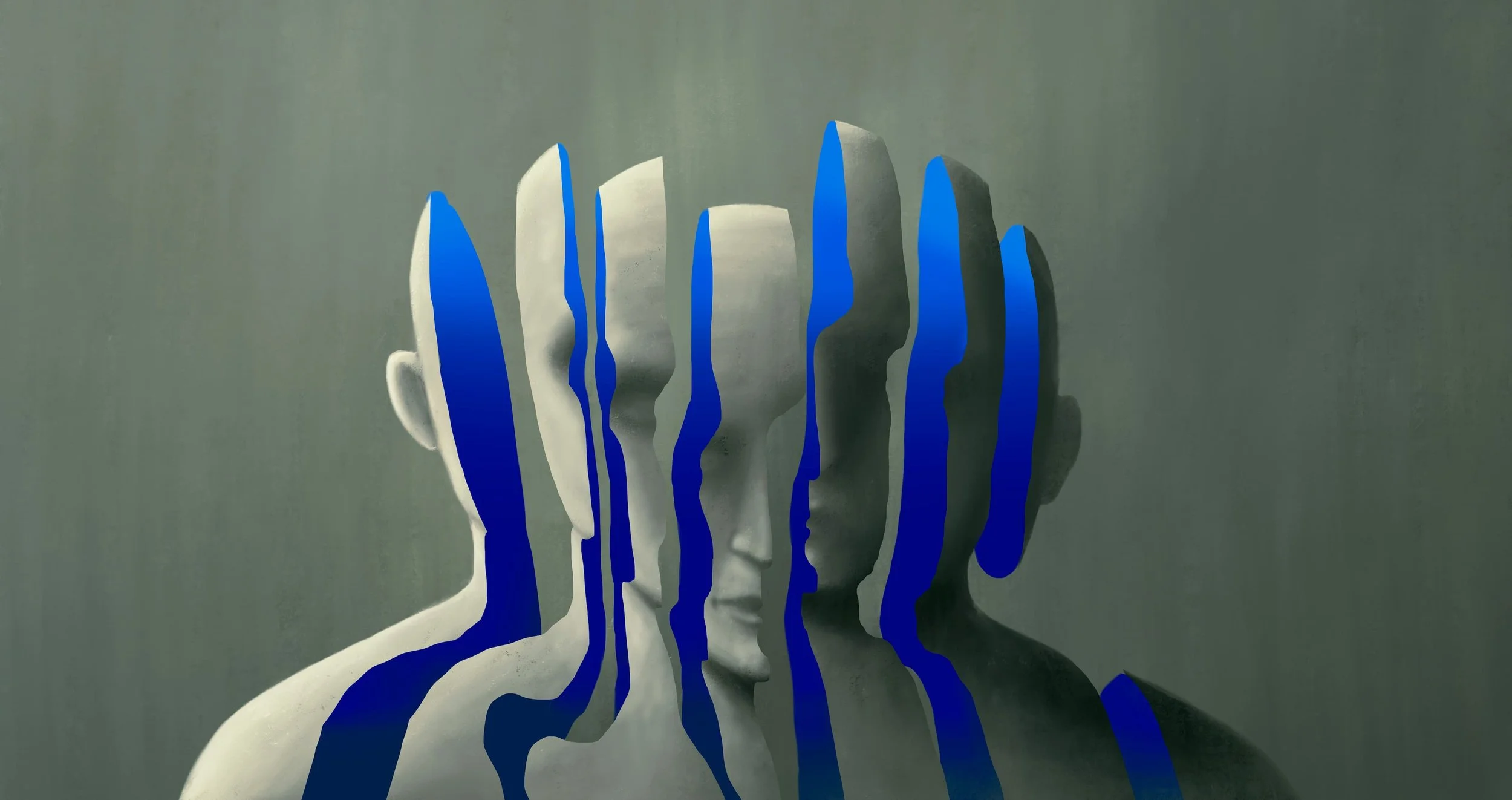Shame and Relationships: Why It Makes Closeness So Difficult
Image Credit: A.C.
Many couples come to therapy thinking their struggles are about communication. But beneath the surface, one of the biggest hidden forces in relationships is shame.
Shame is the voice that says, “I am not enough. If they see the real me, they’ll leave.”
Shame shows up with others, not just ourselves, into the way we love, argue, and connect. Left unchecked, it can sabotage intimacy, even when two people care deeply for one another.
What Attachment Theory Tells Us About Love
Attachment theory, developed by John Bowlby and expanded on by Mary Ainsworth, explains how our earliest bonds shape the way we connect in adult relationships. The following are the four attachment styles, which I’m quite confident you’ve heard of if you follow all things psychoeducation, they tend to make their rounds on social media:
Secure attachment: We believe love is reliable and that we are worthy of care.
Anxious attachment: We fear abandonment, often seeking constant reassurance.
Avoidant attachment: We fear closeness, keeping distance to protect ourselves.
Disorganised attachment: We carry both which can look like craving intimacy yet fearing it, often linked to traumatic or adverse experiences growing up.
Mary Ainsworth’s Strange Situation studies showed how children reacted when separated from caregivers. Those early responses can be a loose indicator for how adulthood will go for those children. A securely attached child learns, “I am safe, I am enough.” Insecure patterns, however, often grow fertile ground for shame: “I am too much, I am not enough, closeness isn’t safe.”
Modern practitioners like Peter Fonagy (mentalisation-based therapy) and Sue Johnson (emotionally focused therapy) have built on this work, showing how shame sits at the heart of insecure attachments. When we fear rejection, shame convinces us it’s because of who we are.
I explore how attachment wounds show up in an earlier blog:
Image Credit: Hrant Khachatryan
How Shame Twists Attachment Styles
Shame doesn’t fit neatly into one category of attachment because it can weave through all of them.
Anxious attachment: “I’m too much,” fuels clinginess and constant reassurance-seeking.
Avoidant attachment: “If they see me, they’ll leave,” creates distance and builds emotional walls.
Disorganised attachment: Shame collides with trauma, pulling between “come close” and “stay away.”
Shane’s Story: When Past Shame Shapes the Present
Shane once shared how being financially exploited by someone he trusted left him feeling humiliated, foolish, and unworthy. Although he longed for a safe, loving bond, shame followed him into new relationships. Even when a current partner shows kindness, shame inside reminded, “You’ll be taken advantage of again.”
This is how shame distorts attachment: the past becomes a lens through which the present is filtered. Even when love is real, shame convinces us it cannot be trusted.
Shame’s Blueprint in the Body
Trauma clinician and researcher Bessel van der Kolk has shown how shame is not just a thought, it’s also carried in the body. Many people describe shame as a gut wrenching experience like heat in the face, a sinking chest, or the urge to shrink. These embodied responses make intimacy feel unsafe before logic even has a chance to intervene.
Iain McGilchrist, in his work on brain hemispheres, explains how shame often traps us in left-hemisphere dominance which includes rigid self-criticism, overthinking and scanning for flaws. The right hemisphere, which allows for embodied presence and connection, gets down-regulated. This is why shame can make us over-analyse our relationships instead of simply experiencing them, in other words, keeping us in our heads and away from our bodies.
(If this resonates, see also my earlier blog on overthinking, where I explored how hemispheric imbalance can fuel the cycle.)
Image Credit: Getty Images
The Shame Cycle in Couples
Brené Brown describes shame as deeply relational.
One person’s shame often triggers defensiveness in the other, creating cycles that are notoriously difficult to break.
One withdraws which can cause the other to pursue harder.
One criticises which can cause the other to shut down.
As a result, both feel unseen, unheard, and unworthy.
The tragedy (I don’t use that word lightly) of shame in couples is that it makes both people feel isolated, even when they long for closeness. Instead of saying, “I’m afraid of losing you,” shame pushes us into blame, silence, or over-apology.
3 Ways Shame Shows Up in Relationships
Shame doesn’t always look like withdrawal.
In romantic relationships, it can often wear subtler disguises:
1. Criticism and Blame as a Shield
When shame calls you internally “you’re not enough,” one way to cope is to turn the spotlight outward. In Freudian psychology, this is known as projection. Criticism, nitpicking, or defensiveness can act as protection: “If I find fault in you first, you won’t notice what’s wrong with me.” But this defence leaves partners feeling attacked instead of connected.
2. Difficulty Receiving Love or Praise
Shame makes affection feel undeserved. Compliments get brushed off with a quick, “You don’t really mean that.” Gestures of love feel uncomfortable rather than reassuring. To a partner, this feels like rejection, when underneath it’s the fear that “if they really knew me, they wouldn’t love me.”
3. Sabotaging Intimacy
For many, shame sparks the fear: “If I let them too close, they’ll see the real me and leave.” To prevent that imagined rejection, a person may unconsciously create distance which can look like picking fights, withdrawing after closeness, or losing interest as a relationship deepens. It’s not necessarily a lack of desire for intimacy but it’s the fear of being exposed.
Image Credit: Getty Images
Breaking Free From Shame-Driven Cycles
Healing shame in relationships isn’t about getting rid of conflict or trying to make sure conflicts don’t happen again. It’s about learning to name shame when it arises and to differentiate it from guilt.
Some helpful first steps include:
Recognising the trigger: Notice moments when your reaction feels bigger than the situation.
Naming shame: Saying to yourself, “This is shame speaking,” creates space from the voice and it gives you room to respond from a centred place. The world isn’t going to end if you take an extra second or two before responding.
Reaching for repair: Where shame withdraws, vulnerability can reconnect. Saying “I felt insecure” often builds bridges instead of walls.
Therapy offers a safe place to explore these cycles, unpack old attachment wounds, and practice new ways of relating that don’t begin and end with shame.
Final Thoughts
If shame has been shaping your relationships like making closeness feel unsafe, or making love conditional, or having endless arguments — you don’t have to keep repeating the cycle!
I can help you explore how shame affects your attachment patterns and support you in building healthier, more secure bonds.
You may also like:
What Is Shame? Understanding the Hidden Force That Shapes Our Lives
Shame vs Guilt: Why They Feel Different but Get Mixed Up
The Inner Voice of “Not Enough”: How Shame Shapes Self-Worth
References
Brown, B. (2015). Daring Greatly: How the Courage to Be Vulnerable Transforms the Way We Live, Love, Parent, and Lead. Penguin.
Foster, B. (2025a). How to Stop Overthinking (Without Cutting Off Your Head): Reconnecting Mind, Body and Intuition. Ben Foster Therapy. Available at: https://www.benfostertherapy.com/blogs/how-to-stop-overthinking-without-cutting-off-your-head. [Accessed: 09 August 2025].
Foster, B. (2025b). The Pattern You Can’t See: Why Do I Fall For People Who Hurt Me? Ben Foster Therapy. Available at: https://www.benfostertherapy.com/blogs/how-to-stop-overthinking-without-cutting-off-your-head. [Accessed: 09 August 2025].
McGilchrist, I. (2019). The Master and His Emissary: The Divided Brain and the Making of the Western World. Yale.
van der Kolk, B. (2015). The Body Keeps the Score: Brain, Mind, and Body in the Healing of Trauma. Penguin.





